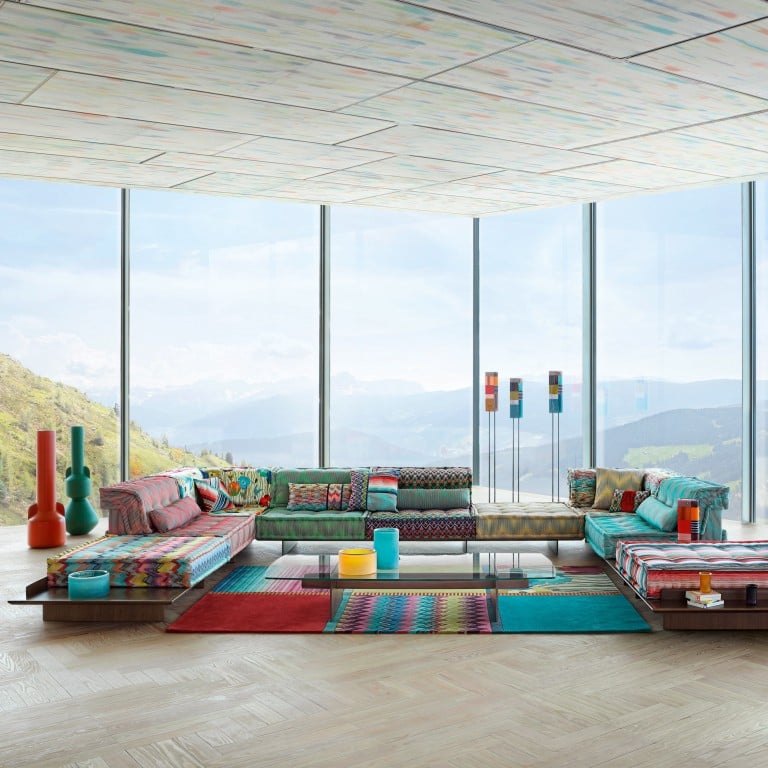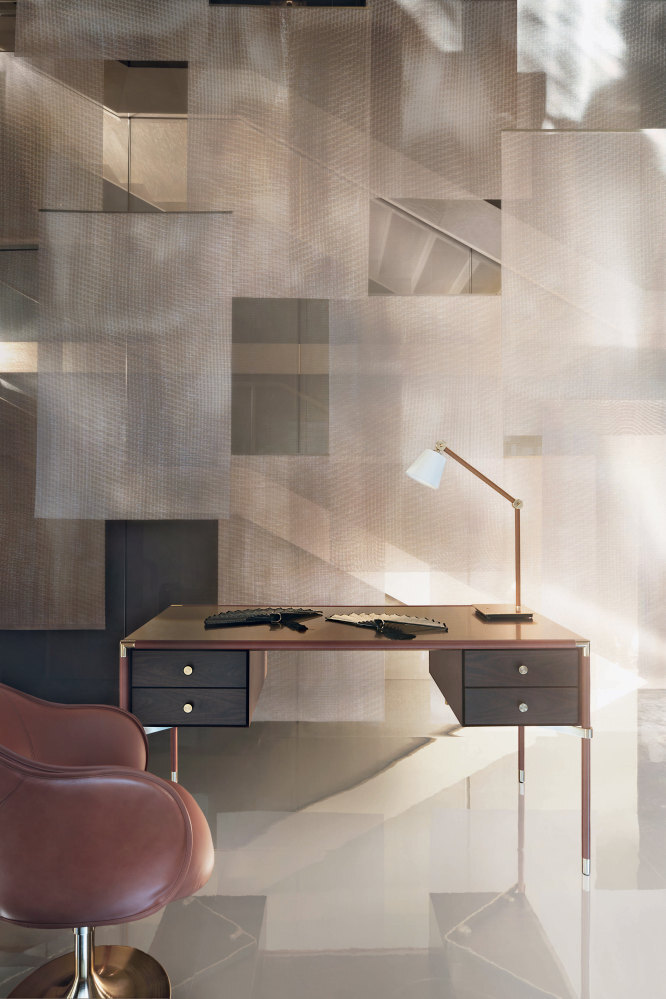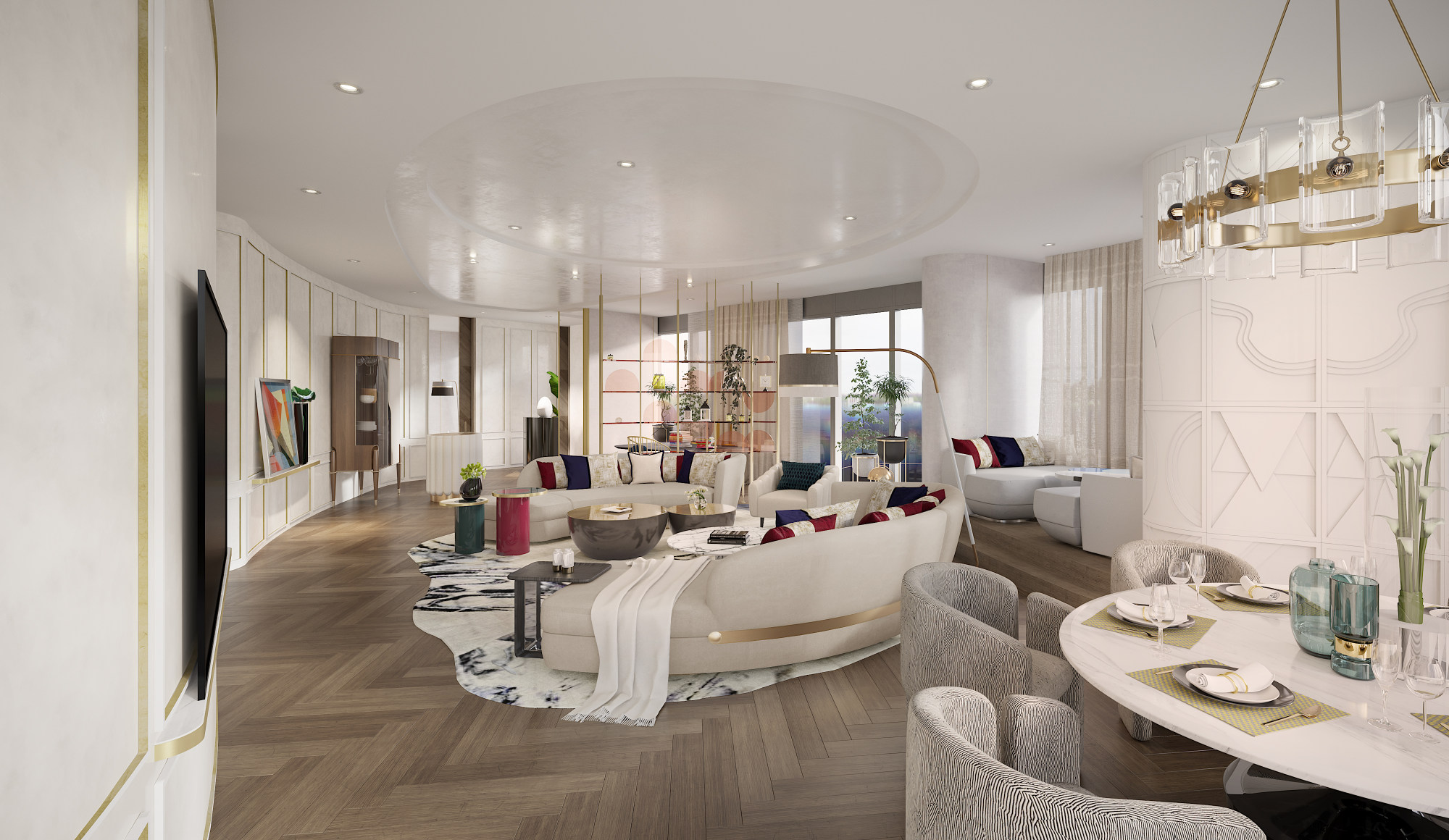Milan Design Week showcased 2022’s most fashionable furniture, with Supersalone featuring homeware from Bulgari, Dior, Fendi, Gucci and Hermès

When Milan Design Week got underway in early September, it was a scaled-down affair after a pandemic-induced 18-month delay. Included in the week’s festivities was Supersalone, a special edition of the pacesetting Salone del Mobile (Milan Furniture Fair), which set the tone for design in 2022 and beyond, and served as a reflection of our collective new normal.
That’s not to say that there was less glitz and glamour than in any other year. Major luxury designers were front and centre again in 2021, including Versace, Dior (with its Medallion chair), Off-White (with porcelain maker Ginori), Gucci, Hermès and Bulgari, among others.
Themes and ideas woven through Supersalone – that will be appearing in our homes, offices and hotels soon – included the broader use of natural materials, a focus on sustainability (again), playful shapes that were more often curvaceous than not, a sense of fun rooted in bright colours, and – unsurprisingly – the now-blurry line between home, leisure and office spaces.

“Milan Design Weeks always showcase the avant-garde – and this year was no exception,” says John McLennan, the founder and executive chair of Hong Kong-based interiors retailer Indigo Living.
“Curves and rounded silhouettes continue to be on trend … and there were also plenty of new fabrics made from recycled materials, which is a continuing trend and will no doubt keep growing.”
So what does that mean for consumer interiors and design heading into 2022? We can expect more soft edges in our homes, as well as a fair amount of leather, silk and luxurious metals, and what McLennan calls “ethereal colour combinations and visuals”, or softer tones with punches of bright colour.
But those elements are going to be in wildly reworked spaces, with the lingering pandemic making its presence felt at the Milan show, pointing out the direction for interior spaces in the years ahead.

Design and construction often make dramatic corrections when they are tested by a disruptive event like Covid-19. In the months immediately following the outbreak, Hong Kong-based Peter Lampard, co-founding partner of interdisciplinary studio Deft (Design Eight Five Two), noticed an immediate demand for re-evaluation of space. However, given the reality of Hong Kong homes, he expects that demand is unsustainable, and argues interior layouts are already swinging back to pre-pandemic configurations based on “what we are seeing in these past few weeks, with what the real estate market is supplying and what consumers are actually buying”.
Milan Design Weeks always showcase the avant-garde – and this year was no exception
J Lee Rofkind, principal and regional leader of hospitality at Hok, a global design firm, sees it differently, citing her own residential projects as remaining focused on increasing personal square footage. For her, Covid-19 will have a major impact on design going forward, with the line between office and home environments losing its rigidity, but the main trend to watch is simple: “In a word: space. Thanks to the pandemic, many people are spending more time in their homes than they have in their whole life,” says Rofkind.
“The average person now needs space to work, play, study, cook, eat and sleep in their home. In Hong Kong that means flexibility, using movable partitions, modular multitasking millwork and adaptable furnishings. The post-pandemic home needs to be well ventilated and easy to keep clean with less fussy details.”

For 2022 and beyond, flexibility looks to be the operative word, and not simply from a functional perspective. Emma Maclean, founder and creative director of Hong Kong-based interior design firm EM Bespoke, predicts even more club lounge-like design that embraces earthy tones and textures, as well as relaxing environments that blur the line between home and work to an even greater degree. For Maclean, that’s in keeping with what she sees coming to the fore in homes: furniture pieces are now a focus for their functionality, not just for their aesthetics.
The post-pandemic home needs to be well ventilated and easy to keep clean with less fussy details
Milan also saw the emergence of futurism in materials. “Along with touchless features and more square footage per person, another huge shift within the world of design is in materials, both architectural and fabrics,” adds Maclean.
Indigo’s McLennan agrees, noting he’s seen an increase in requests for finishes and fabrics that have antiviral and antibacterial properties, and which hold up to more rigorous cleaning processes. “I see more and more of these types of materials coming into the market in the future.”
Of course, none of that means interiors are on the verge of losing all sense of creativity. Designer-led furnishings and accessories will be prominent in 2022, and brands like Hermès, Armani, Fendi and Versace Home are leading the way. Versace’s exhibition at Supersalone was defined by its signature motifs (Medusa and Barocco) mixed with fine fabrics and a new La Greca jacquard pattern, frequently seen on curvilinear statement pieces and colourful accessories.
French brand Roche Bobois is joining the rounded, colourful movement with its mahjong sofa series (designed by Kenzo Takada, Jean Paul Gaultier and Missoni), the self-explanatory Bubble line, the U-shaped Caractère modular sofas and the Dot armchair, which looks as if it were cut out of a sphere, among other boldly hued items. The brand’s Eden-Rock collection has taken the hard corners off its bars, cabinetry, desks and sideboards.

Indigo’s new Around the Bend line embraces the soft edge as well, with its bowed Tyson chairs, and the Boston line incorporates luxe materials, such as natural Cortina leather, and distressed hardwood in the Miles armchairs.
Even traditionally geometric Scandinavian designers such as Carl Hansen & Søn are rounding off, with the Danish manufacturer adding Rikke Frost’s gently arched sideways sofa to its line-up, and resurrecting Ole Wanscher’s classic mid-century dining chair, showing that the trend to natural materials is more current than ever.
The soft edges and cheery colours may be a reaction to 2020 and 2021, but McLennan and Lampard agree the most fundamental changes are here to stay.
“Certainly there are lessons that we have learned that will be carried forward in terms of circulation, seating, hygiene and so on, and many of these will carry forward in modified ways,” says Lampard.
But for 2022, our spaces and what we put in them will reflect all aspects of our lives at all times. “I personally hope that we can find the right balance between hunkering down in our homes and being social animals,” finishes McLennan. “And I believe design will begin to reflect this balance.”

- The special edition of the Milan Furniture Fair included Armani, Versace, Off-White and Roche Bobois with mahjong sofas by Kenzo Takada, Jean Paul Gaultier and Missoni
- Our Covid-19 ‘new normal’ has blurred the line between home and work, calling for more flexible, easy-to-clean spaces – but there’s still room for creativity